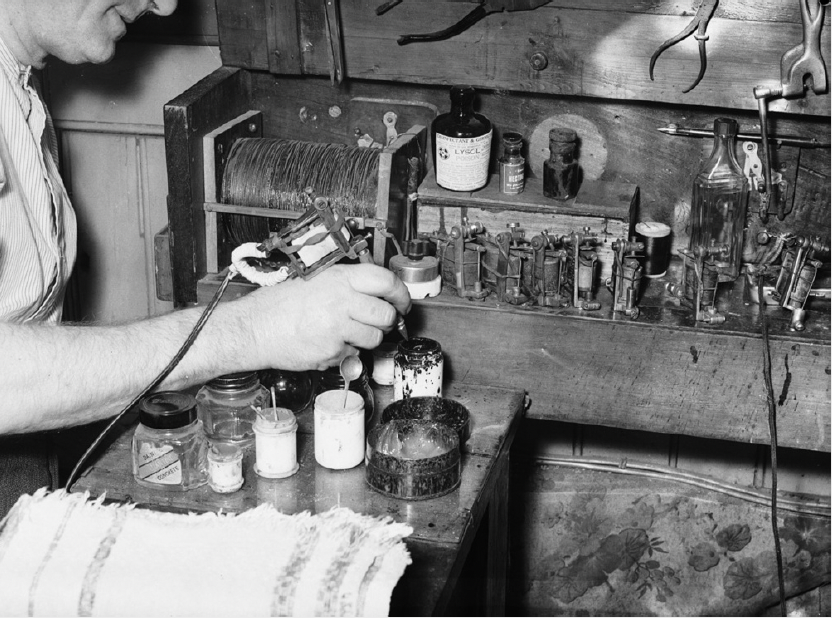
Tattooing is the practice of producing an indelible mark of figure on the human body by inserting pigment into the dermis layer of the skin using needles or other sharp instruments.
The Process
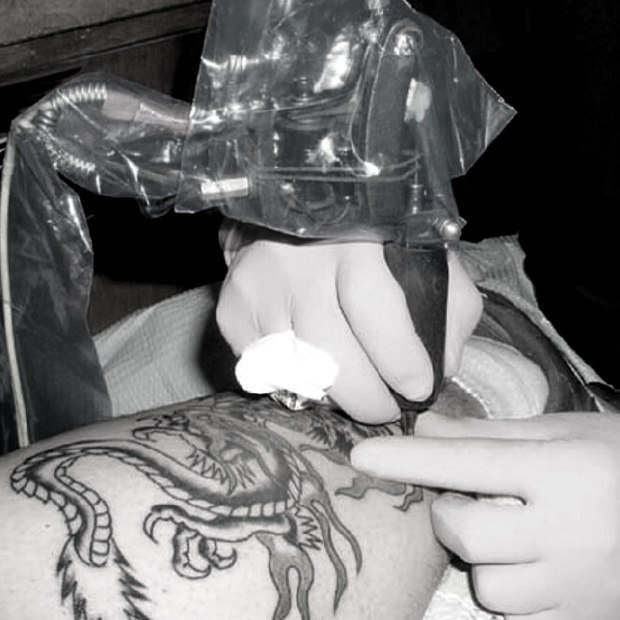
A handheld device, powered by low voltage direct current, holds solid needles placed singly or in a groups of up to fourteen on an oscillating bar.
The needles are dipped into colored inks and then moved across the skin in desired pattern, penetrating rapidly and vertically 0.5 – 2.0 mm into the skin, depositing the pigment into the dermis.
A thin layer of petroleum jelly is applied to the skin before and during the procedure to minimize blood loss and prevent spatter.
After the tattoo is finished, the area is cleaned with a mixture of alcohol and water and more ointment is applied.
Tattoo Pigments
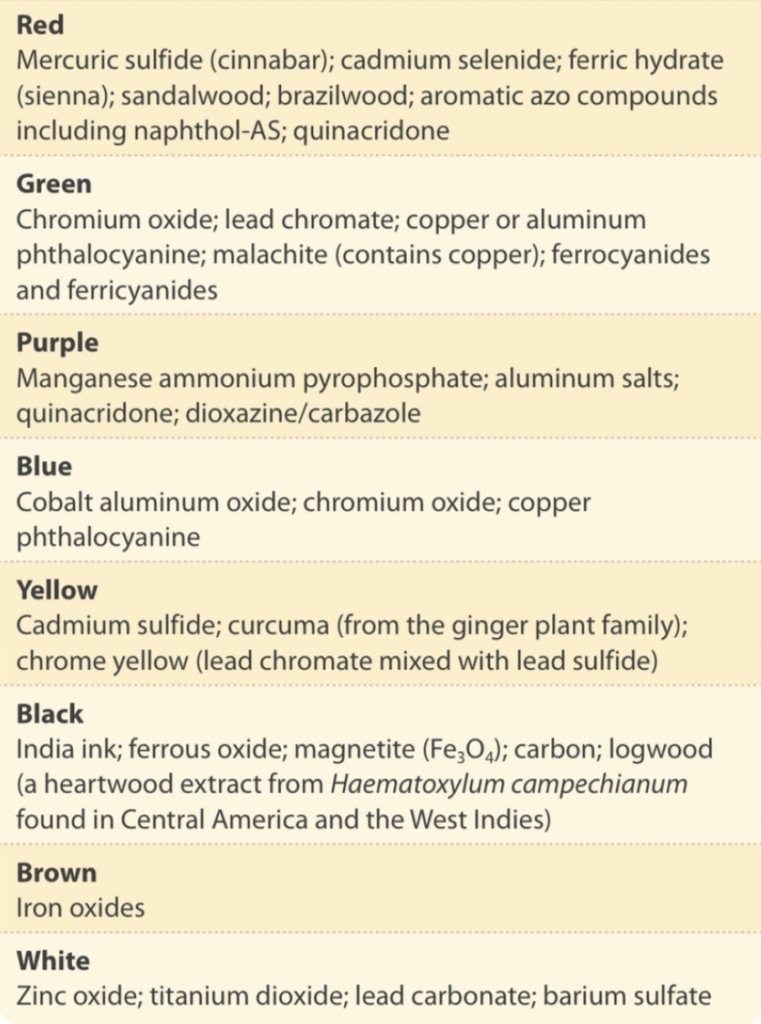
Tattoo pigment composition, as obtained from the manufacturer and possibly further mixed by the artist, is complex, usually non-sterile, unregulated, variable and changing.
Did you know?
Even if you get inked by a licensed tattoo artist and follow the after-care instructions, your skin still can react in strange and unexpected ways. Some reactions happen right away, other take weeks or years to appear.
Tattoo Associated Skin Reactions
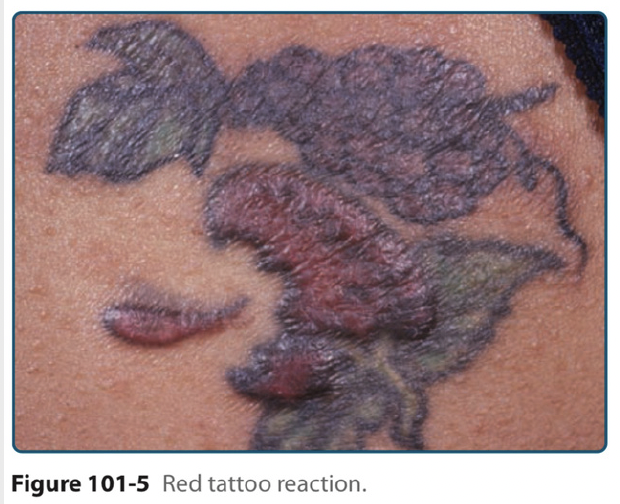
The compositions of tattoo inks is highly changeable, they can include abundant potentially allergenic or carcinogenic compounds.
Most allergic skin reactions are caused by mercury sulfide, which is found in red inks.
Black, dark blue and red inks have carcinogenic potential.
According to studies, a colored tattoo (83.3%) is more likely to cause an adverse skin reaction than a black tattoo (12.5%).
The complex chemicals contained in colored pigments may contribute to the high incidence of side effect of a colored tattoo.
Research shows that colored tattoos more likely to caused skin problems such as lichenoid, granulomatous or hypersensitivity allergic reactions.
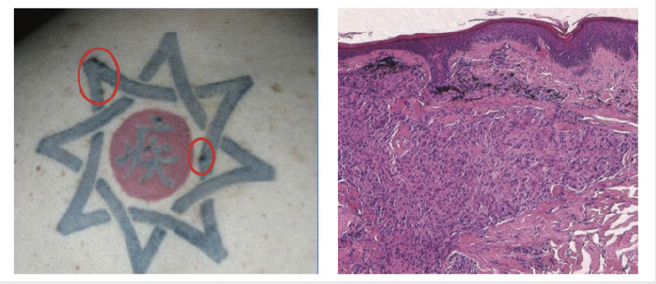
Foreign body granulomatous reaction on a black tattoo and relative histology with granulomatous depositions of exogenous pigment in the background of granulomatous-productive inflammation of the dermal stroma.
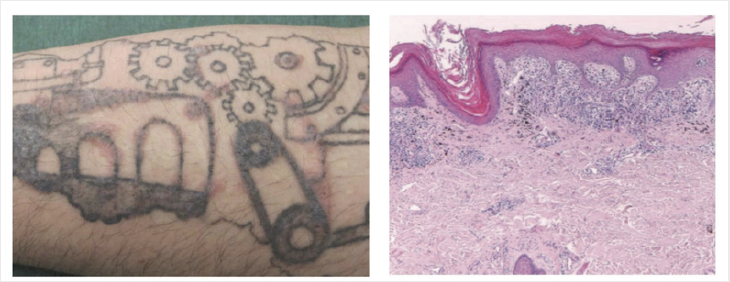
Lichenoid reaction on a black tattoo and relative histology with a widespread vascular basal epidermic degeneration with a deep dermal lymphohistiocytic infiltrate into a lichenoid pattern, associated with deposition of exogenous pigment.
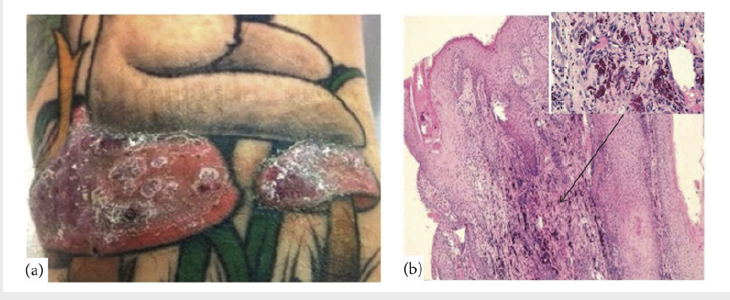
Psudoepitheliomatous hyperplasia on a red tattoo and relative histology with epidermal psudoepitheliomhatous hyperplasia and follicular hyperkeratosis.
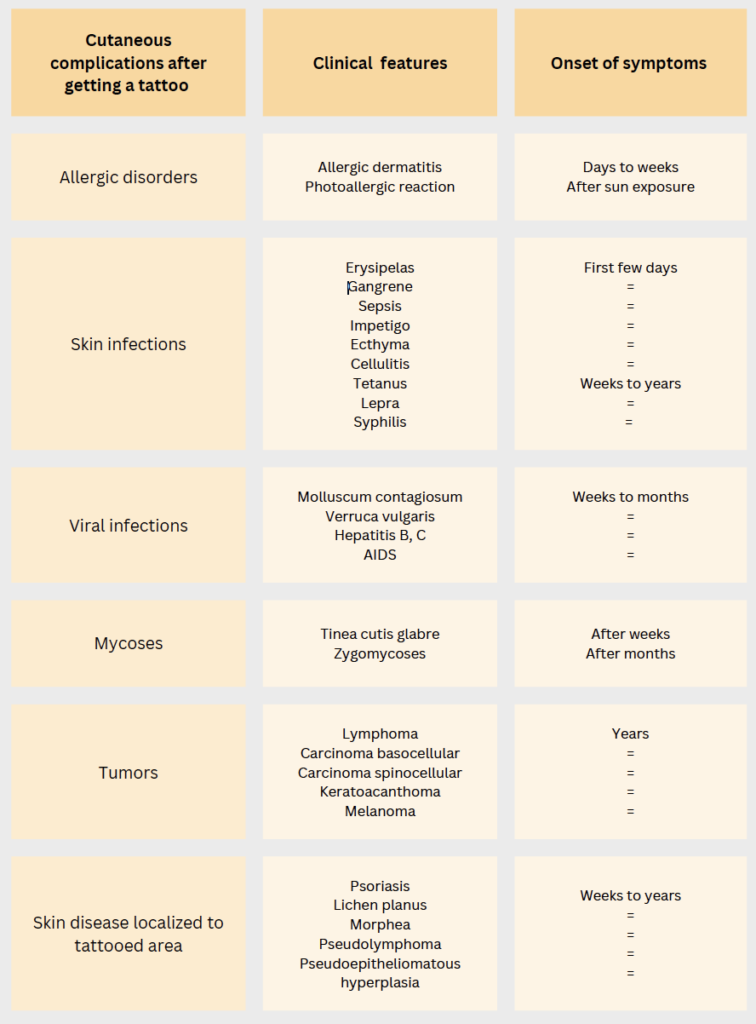
A little advice for you!
Make sure you’re prepared before getting a tattoo, considered your options carefully before getting a tattoo. Don’t let yourself be pushed into getting a tattoo and don’t get one while you’re under the influence of alcohol or drugs.
Consult your board certified dermatologist, if you’re experiencing any of these symptoms.
References:
- Kang S, Amagi M, Bruckner AL, Enk AH, Margolis DJ, McMichael AJ, Orringer JS. Fitzpatrick’s Dermatology 9th ed. New York: McGraw-Hill Education; 2019
- Bassi A, Campolmi P, Cannarozzo G, Conti R, Bruscino N, Gola M, et al. Tattoo-Associated Skin Reaction: The Importance of an Early Diagnosis and Proper Treatment. BioMed Research International[Internet]. 2014 [cited 2021 Mar 19]
- Olszewska J,Charuta A, Sierakowska i, et al. Various skin reactions to tattoos – review literature. Poland; 2021. Journal of Applied Cosmetology Vol. 39 issue 1: p 61-69
- Serup J, Hutton Carlsen K, Dommershausen N, Sepehri M, Hesse B, Seim C, et al. Identification of pigments related to allergic tattoo reactions in 104 human skin biopsies. Contact Dermatitis. 2019 Nov 18;82(2):73–82.
- Duan L, Kim S, Watsky K, Narayan D. Systemic Allergic Reaction to Red Tattoo Ink Requiring Excision. Plastic and Reconstructive Surgery – Global Open [Internet]. 2016 Nov 1 [cited 2022 Sep 8];4(11):e1111
